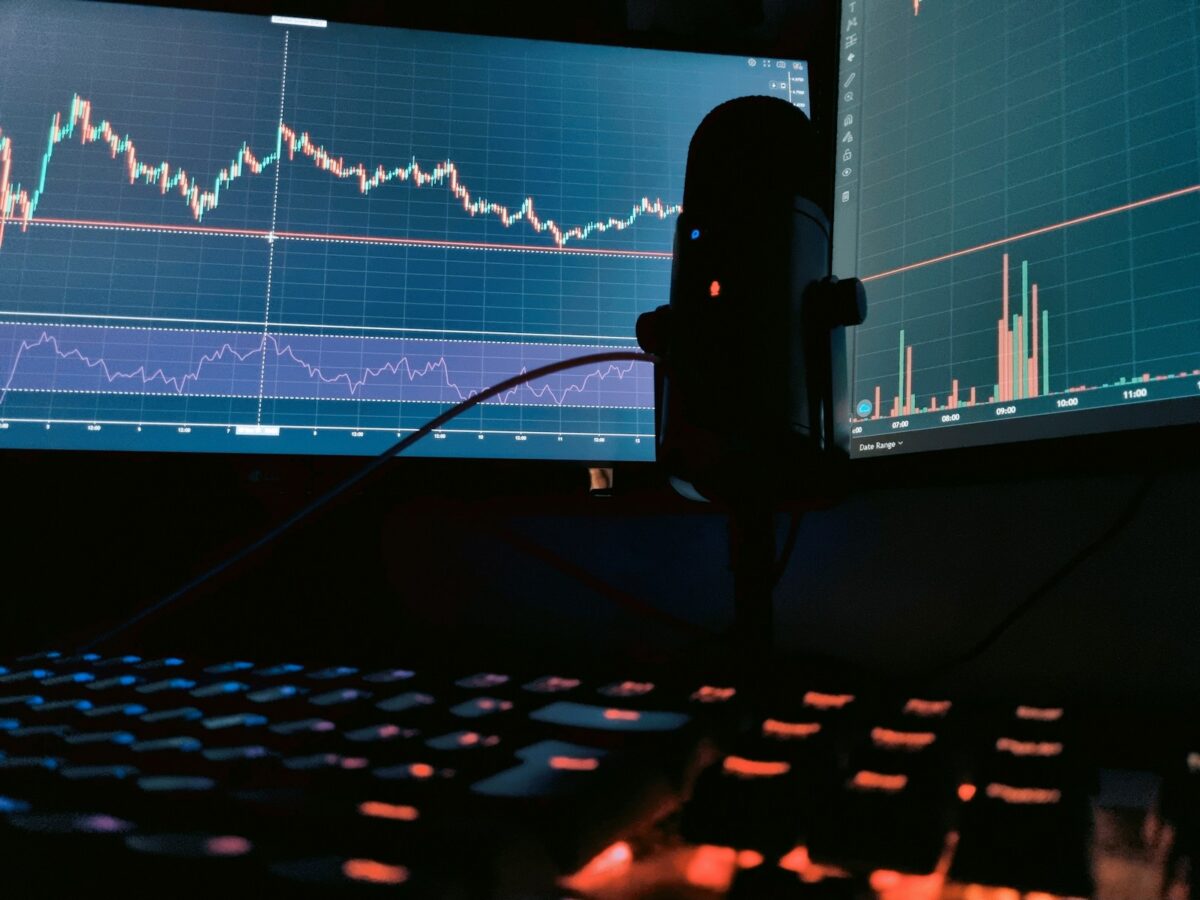
Safe token swapping

Price fluctuations during asset conversion can lead to significant losses if slippage is not tightly controlled. Setting strict slippage tolerance limits before initiating a transaction on a decentralized exchange (DEX) ensures that the executed rate does not deviate beyond acceptable bounds, preserving expected value.
Verification of contract addresses and liquidity pools is paramount to prevent interaction with malicious or faulty smart contracts. Employing reputable sources and tools for validation enhances protection against scams and erroneous trades that compromise security.
Implementing transaction monitoring and using protocols with built-in safeguards improves confidence in the process. Techniques like front-running resistance and gas optimization play key roles in maintaining integrity while exchanging digital assets efficiently.
Safe token swapping
To minimize risks during asset exchanges on decentralized platforms, prioritizing protection mechanisms is critical. Implementing rigorous verification protocols for smart contracts and counterparties reduces vulnerability to fraud or faulty code execution. One practical approach involves using multisignature wallets combined with on-chain audits to ensure that the transaction logic aligns with expected parameters before execution.
Slippage control plays a pivotal role in preserving value throughout asset conversion processes. Setting maximum slippage thresholds within decentralized exchanges (DEXs) prevents excessive price impact caused by sudden market fluctuations or low liquidity pools. Traders should configure these limits carefully, balancing the need for order fulfillment against potential losses from unfavorable price movements.
Technical aspects of security and verification
Security frameworks underpinning decentralized swapping rely heavily on cryptographic guarantees and transparent execution environments. Verification of token contracts through platforms like Etherscan or BscScan allows users to inspect source code authenticity and transaction history, mitigating risks associated with counterfeit or malicious tokens. Additionally, incorporating decentralized oracle services provides reliable external data feeds that enhance decision-making accuracy during swaps.
The influence of price impact on liquidity pools demands close attention when planning trades. Large-volume conversions can significantly alter pool ratios, resulting in deteriorated exchange rates and increased slippage. Employing automated market maker (AMM) models that dynamically adjust fees based on trade size helps maintain equilibrium and reduces adverse effects for all participants.
- Use DEX aggregators to compare prices across multiple venues for optimal rate discovery.
- Monitor real-time liquidity depth indicators before committing significant sums.
- Apply time-weighted average price (TWAP) strategies to spread orders and mitigate volatility exposure.
Case studies demonstrate that integrating layered protection enhances transactional integrity. For example, the implementation of front-running resistant designs such as batch auctions or commit-reveal schemes significantly curtails exploit attempts targeting order sequencing vulnerabilities within decentralized exchanges. These innovations contribute meaningfully to overall ecosystem resilience.
In conclusion, ensuring secure asset interchange requires a multifaceted approach combining protocol-level safeguards, precise slippage management, contract verification procedures, and awareness of market dynamics influencing price behavior. Continuous experimental evaluation of emerging technologies and adaptive risk assessment strengthens trustworthiness while empowering traders to execute complex operations confidently within decentralized financial infrastructures.
Choosing Trusted Swap Platforms
Selecting a reputable platform for asset exchange requires thorough verification processes to ensure protection against common vulnerabilities. Prioritizing decentralized exchanges (DEXs) with transparent smart contract audits reduces the risk of malicious code impacting users’ holdings. The integration of multi-layered security protocols, such as hardware wallet compatibility and two-factor authentication, further enhances defense mechanisms during digital asset conversion.
Evaluating slippage tolerance settings is fundamental when interacting with swapping services, as excessive slippage can lead to unfavorable trade execution and significant value loss. Platforms offering customizable slippage parameters allow users to tailor transactions to current market liquidity conditions, minimizing unexpected price impact. This feature is particularly critical in volatile environments where rapid price fluctuations occur.
Verification and Security Practices
Reliable platforms implement rigorous identity verification and continuous monitoring of contract interactions to identify suspicious activities promptly. Open-source codebases subjected to community scrutiny provide an additional layer of trustworthiness by enabling independent audits and real-time vulnerability assessments. For instance, Uniswap’s publicly available smart contracts have undergone multiple third-party security evaluations, reinforcing its position within the ecosystem.
Security also depends on the underlying blockchain infrastructure; choosing networks with proven consensus algorithms mitigates risks associated with transaction finality and double-spending attacks during asset exchange operations. Layer 2 solutions that maintain robust cryptographic guarantees can enhance throughput without compromising integrity, benefiting the overall safety profile of token conversion platforms.
Technical Considerations for Impact Reduction
The economic impact on user assets during swaps relates directly to liquidity pool depth and gas fee optimization. Platforms employing automated market makers (AMMs) balance liquidity provision with dynamic pricing models to decrease slippage effects. SushiSwap’s implementation of concentrated liquidity pools demonstrates how targeted capital allocation improves swap efficiency while limiting price deviations caused by large trade volumes.
Moreover, transaction batching and gas fee estimation tools embedded in some interfaces contribute to cost-effective execution by reducing network congestion impact. Investigating these technical components helps users understand how operational design influences their net returns post-trade.
Comparative Analysis of Decentralized vs Centralized Solutions
Centralized exchanges offer higher throughput but often require relinquishing custody, increasing counterparty risk during asset conversions. In contrast, DEXs enable non-custodial operations that preserve user control over private keys throughout the process, enhancing protection against theft or platform insolvency events. However, they may suffer from slower confirmation times depending on network congestion.
- Diverse Liquidity Sources: Aggregators like 1inch leverage multiple DEXs simultaneously to optimize trade routing and reduce price impact.
- User Experience: Intuitive interfaces combined with informative transaction previews assist in making informed decisions regarding price slippage tolerance settings.
- Fee Transparency: Platforms displaying detailed breakdowns of protocol fees versus network costs empower users to evaluate total expenses accurately.
Case Study: Mitigating Risks through Enhanced Protocol Design
A recent analysis revealed that implementing time-weighted average price (TWAP) oracles within certain swapping protocols significantly decreases susceptibility to front-running attacks that distort trade outcomes. By integrating off-chain data feeds secured via cryptographic proofs, these systems create more reliable reference prices, effectively lowering adverse selection risk during order matching phases.
This approach exemplifies how combining traditional financial mechanisms with blockchain-native features fortifies transactional integrity while maintaining decentralization principles–an inspiring direction for future platform development efforts aiming at maximizing both security and efficiency.
Verifying smart contract security
Begin verification by thoroughly auditing the contract’s codebase for vulnerabilities that could affect asset exchanges. Critical issues often arise from improper handling of price feeds oracles, which directly impact the valuation during asset conversion processes. Implementing rigorous validation of input parameters and employing formal verification methods helps identify potential exploits related to price manipulation and unauthorized fund transfers.
Protection against slippage is a key factor in maintaining security during asset conversions. Contracts must include mechanisms to limit acceptable price deviations between the initiation and execution of an exchange. Setting strict slippage tolerance thresholds reduces exposure to front-running attacks and sandwich trades, which can drain user funds or cause unexpected losses due to sudden price fluctuations.
Technical approaches to enhance contract integrity
Verification protocols should incorporate both static and dynamic analysis tools to detect logic errors and runtime anomalies. Static analysis inspects bytecode patterns for common vulnerabilities such as reentrancy, integer overflow, and access control flaws. Dynamic testing simulates real-world scenarios including rapid market movements, ensuring contract resilience under stress conditions that influence pricing and transaction order.
Case studies demonstrate how multisignature authorization combined with time-locked functions add layers of protection against unauthorized modifications impacting value conversions. For example, certain decentralized platforms integrate oracle aggregation techniques that cross-verify multiple data sources before adjusting asset rates, thereby minimizing manipulation risks that directly affect the fairness of exchanges and safeguard users from adverse financial impact.
Preventing Phishing and Scams in Decentralized Exchanges
To minimize the risk of phishing attacks during asset exchange operations, rigorous verification processes must be implemented. Users should confirm contract addresses through trusted sources before initiating any transaction on a decentralized platform. This verification step is crucial to avoid interacting with counterfeit contracts that mimic legitimate decentralized exchange (DEX) interfaces, which can result in irreversible fund losses.
Manipulation of price parameters and slippage settings often serves as an entry point for malicious actors. Adjusting slippage tolerance above recommended levels increases vulnerability by allowing transactions at unfavorable rates, facilitating front-running or sandwich attacks. Careful control over these parameters provides a primary layer of defense against exploitative trades.
Technical Strategies for Enhancing Transaction Security
An effective protective measure involves integrating multi-factor authentication combined with hardware wallet confirmations before executing swaps on DEX platforms. This approach reduces exposure to phishing by requiring physical device approval, making unauthorized transactions significantly more difficult. Additionally, employing browser extensions or software tools that detect fraudulent URLs helps users avoid deceptive sites designed to harvest private keys.
The impact of decentralized oracle manipulation on price feeds also warrants close attention. Attackers may target oracle systems to distort asset valuations temporarily, influencing swap outcomes detrimentally. Continuous monitoring of oracle data consistency and fallback mechanisms within smart contracts are vital technical safeguards that enhance overall platform resilience against such exploits.
- Example: In 2020, a compromised oracle led to substantial losses on a popular DEX when manipulated price inputs triggered erroneous liquidation events.
- Mitigation: Deploying decentralized oracles with multiple independent data sources decreases single-point failure risks.
User education focusing on recognizing phishing attempts complements technical protections effectively. Encouraging scrutiny of transaction details–including gas fees, recipient addresses, and slippage thresholds–empowers participants to identify suspicious activity proactively. For instance, unexpected increases in slippage settings during token exchanges can indicate a potential scam attempt requiring immediate cancellation.
A holistic approach combining robust technical defenses with informed user practices forms the foundation for trustworthy asset conversion activities within blockchain ecosystems. Ongoing research into anomaly detection algorithms promises further advancements in early scam identification by analyzing transaction patterns indicative of phishing strategies in real-time environments.
Managing Slippage and Fees: Technical Conclusions
Prioritize rigorous verification mechanisms within decentralized exchanges to limit slippage impact and enhance security during asset exchanges. Implementing adaptive algorithms that dynamically adjust for price fluctuations can effectively protect users from unexpected losses caused by market volatility.
Fee structures must be transparently integrated with real-time price feeds, ensuring that transaction costs do not disproportionately erode value, especially in high-frequency or large-volume operations. Combining on-chain data analysis with off-chain computation offers a promising pathway to optimize this balance.
Key Insights and Future Directions
- Verification protocols: Layered validation on trade execution reduces risk of front-running and sandwich attacks, thereby securing user funds against malicious exploitation linked to slippage.
- Price oracle enhancements: Utilizing decentralized oracles with multi-source aggregation improves accuracy, minimizing discrepancies between expected and actual execution prices.
- Dex architecture refinements: Integrating liquidity pool designs that account for both fee minimization and slippage tolerance enhances overall trading efficiency.
- User-configurable parameters: Allowing traders to set personalized slippage thresholds based on volatility forecasts empowers more precise control over trade outcomes.
The broader impact of these advancements lies in fostering trust within decentralized finance ecosystems by mitigating economic inefficiencies inherent in automated markets. As experimentation continues, we anticipate smart contract innovations embedding predictive analytics to preemptively adjust swap conditions in response to emergent market signals.
This trajectory suggests a future where protection against adverse price movements becomes a programmable feature rather than an afterthought, fundamentally transforming how digital asset exchanges handle frictional costs and risk management at scale.


